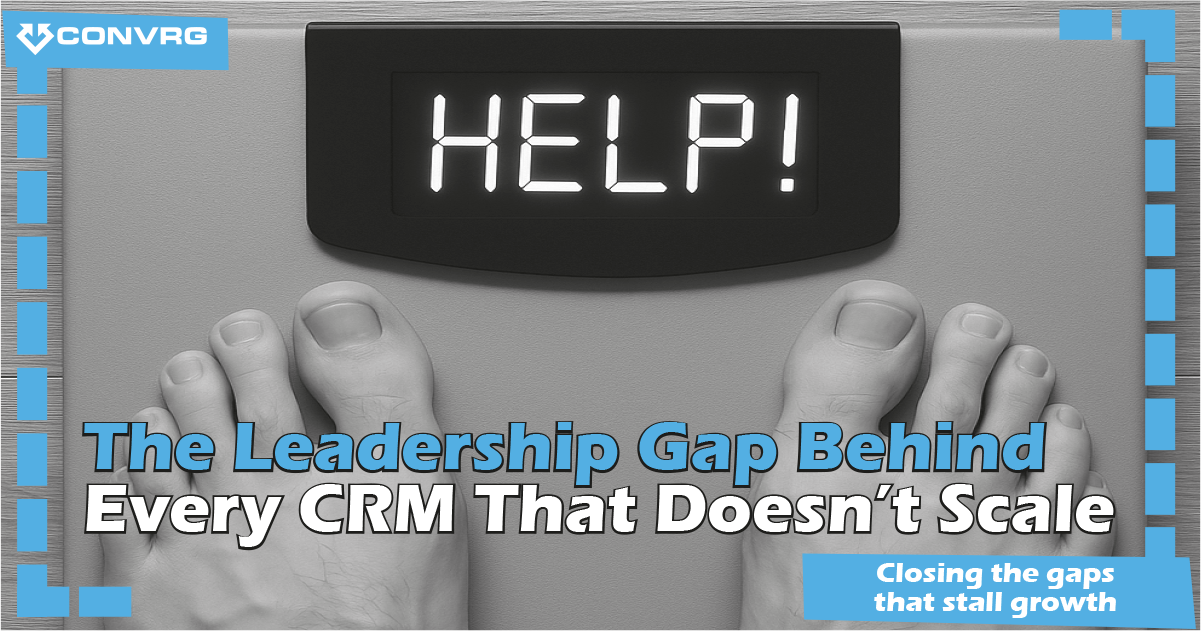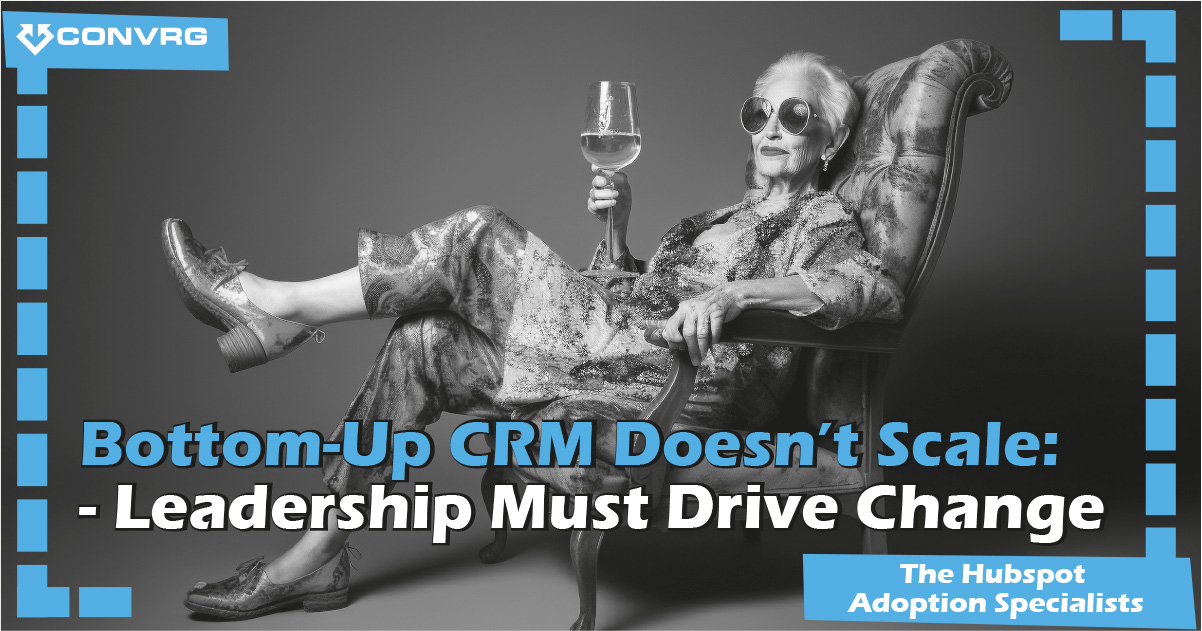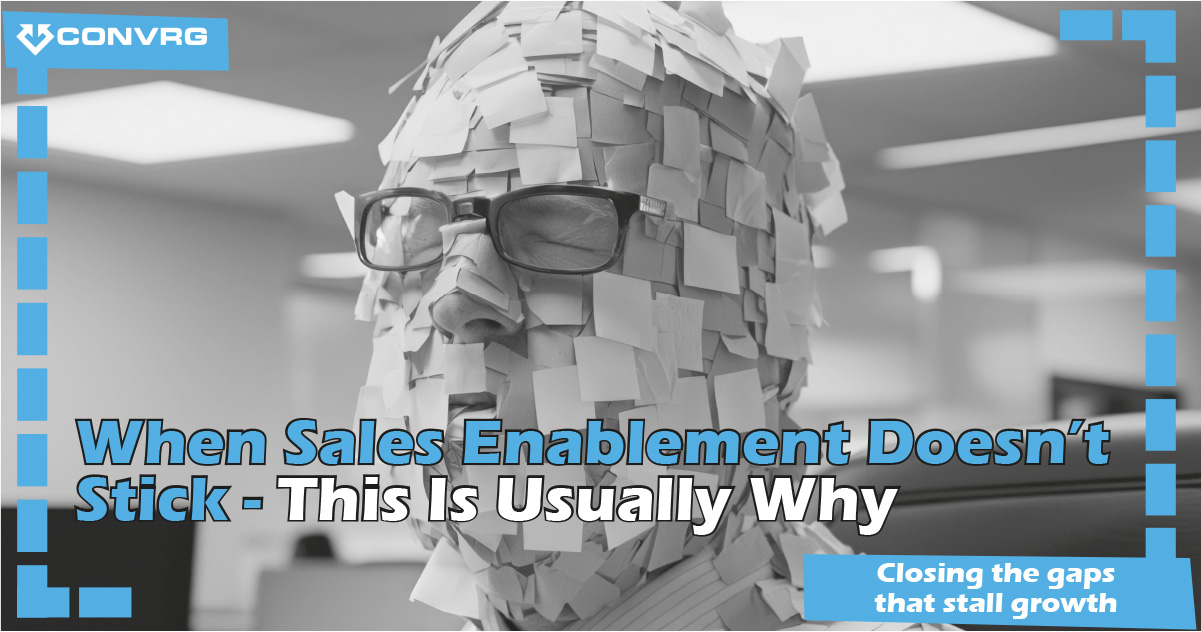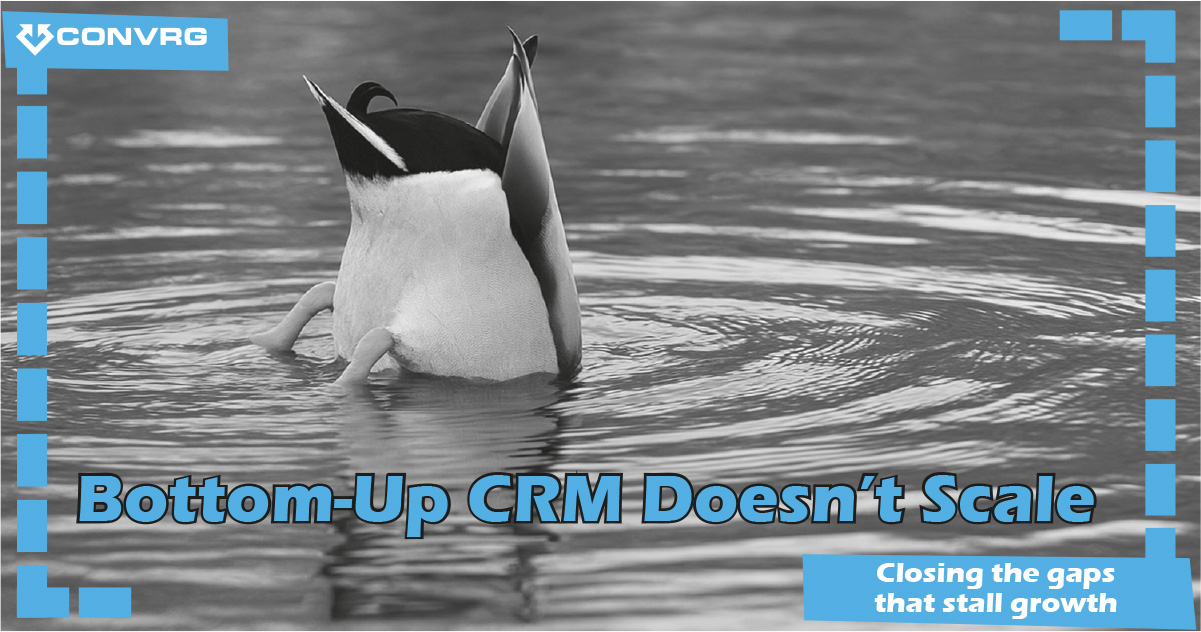Introduction: Why HubSpot Isn’t Delivering
You’ve made the investment. HubSpot licences are live. The implementation project is complete. Pipelines, dashboards, automations - everything is set up. Your teams have been trained.
And yet, here you are.
Forecasts are unreliable. Sales are still using spreadsheets. Marketing’s leads aren’t converting. Dashboards don’t match Finance’s numbers.
You start to wonder if HubSpot was the wrong choice. Maybe you need another system. Maybe it’s time for more training. Maybe you should re-run adoption workshops.
But the problem isn’t HubSpot.
The problem is leadership.
HubSpot - or any CRM - can be a powerful growth engine. But when leadership delegates ownership instead of driving adoption, the platform becomes just another tool instead of the single source of truth it’s meant to be.
This isn’t about software. It’s about alignment, accountability, and ownership from the top.
In this guide, I’ll break down:
- Why CRMs underperform in scaling B2B firms
- How leadership gaps show up in adoption
- What the real costs are if you ignore the issue
- A practical framework to fix it
- Real-world examples of businesses that turned it around
Part 1: The Big Myth of CRM Projects
The “Set and Forget” Trap
Most leadership teams assume that CRM success comes from implementation. Hire a HubSpot partner, configure pipelines, train teams, and watch adoption soar.
But CRMs are not “set and forget”. Adoption doesn’t just happen because the software exists.
Here’s what usually happens instead:
- Sales bypass HubSpot entirely and keep private spreadsheets
- Marketing report success but can’t prove impact because Sales never update lead statuses
- Dashboards go unused because the data isn’t trusted
- Forecasts collapse under inconsistent definitions of what “qualified” really means
We call this the phantom pipeline.
The Phantom Pipeline in Action
On paper, your pipeline looks healthy: millions in open deals, colourful dashboards, neat stages.
But under the surface, it’s chaos:
- Deals sit in “Proposal Sent” for months without follow-up
- Activities aren’t logged, so leaders can’t see what’s actually happening
- Sales managers come to forecast meetings with their own numbers, often contradicting HubSpot
We’ve seen companies make multimillion-pound investment decisions based on phantom pipelines - and get burned.
Example:
A manufacturing client believed they had £12m in open opportunities. In reality, only £4.5m was active, and less than £2m was genuinely qualified. The leadership team had been steering based on fiction.
Part 2: Where Leadership Gaps Hide
Leadership misalignment is rarely obvious at first. On the surface, everyone agrees on strategy. But underneath, adoption suffers.
- No Single Source of Truth
Sales, Marketing, and Finance often track numbers differently:
- Sales forecasts from spreadsheets
- Marketing report on leads and MQLs
- Finance builds its own models in Excel
Everyone’s right in their own system - and everyone’s wrong collectively.
- Strategy Lives in Slides
Leadership away days are inspiring. Growth targets are ambitious.
But when HubSpot isn’t updated to reflect strategic priorities, those plans stay trapped in PowerPoint. Pipelines don’t change. Dashboards track old metrics. Teams continue working the way they always have.
- Pipelines Built Without Sales
In too many businesses, HubSpot pipelines are configured without Sales input.
- Stages don’t match real buyer journeys
- Internal “admin stages” confuse reps
- Probabilities are arbitrary and meaningless
If Sales can’t see their real process reflected in HubSpot, they won’t use it.
- Accountability Disappears
Leaders delegate adoption to IT or Ops. Forecasts run from gut feel or spreadsheets. CRM usage is never enforced.
When leadership doesn’t model adoption, teams won’t follow.
Part 3: The Cost of Ignoring Leadership Gaps
- Missed Forecasts
When pipelines don’t reflect reality, forecasts become fiction. Leaders overcommit, under-deliver, and lose credibility.
- Wasted Marketing Spend
If lead statuses are inconsistent or ignored, Marketing can’t track ROI. Qualified opportunities are lost in the noise.
- Team Friction
Sales blames Marketing for poor leads. Marketing blames Sales for poor follow-up. Service inherits incomplete records and struggles to deliver.
HubSpot should unify your teams. Misalignment fractures them.
- Slower Growth
Poor adoption kills your ability to scale. Without clarity on performance, leaders make decisions based on instinct, not insight.
Part 4: How to Close the Leadership Gap
Leadership-Led Adoption
HubSpot works when leaders lead. Period.
From our experience, here are five steps to embed leadership-led adoption:
Step 1: Set Strategic Intent First
Before configuring HubSpot, leadership must agree growth goals.
Ask:
- Which markets are we targeting?
- Which segments drive profitability?
- How does our funnel need to evolve?
Without alignment here, everything else falls apart.
Step 2: Build Buyer-Aligned Pipelines
Design pipelines around customer commitments, not internal tasks.
Example:
- Instead of “Proposal Sent”, use “Customer agreed to review proposal”.
- Instead of “Demo Complete”, use “Customer confirmed fit”.
When stages reflect reality, data quality improves overnight.
Step 3: Make Dashboards Actionable
Dashboards should drive behaviour, not confuse teams.
Create role-based views:
- Reps: “What do I do today?”
- Managers: “Where are deals at risk?”
- Leaders: “Are we on track?”
Step 4: Lead from the Top
If HubSpot data isn’t central to leadership conversations, nobody else will prioritise it.
Forecasts, pipeline reviews, and board reporting must come directly from HubSpot dashboards.
Step 5: Embed Iteration
Adoption isn’t a one-off project. Review pipelines, dashboards, and processes quarterly. Treat HubSpot as a living system.
Part 5: Case Study - Frontier Medical
Before working with CONVRG, Frontier Medical struggled with unreliable forecasts and fractured reporting.
- Pipelines were inconsistent
- Lifecycle stages were undefined
- Dashboards told conflicting stories
Using our SIMPLIFI Framework, we rebuilt HubSpot to reflect their growth strategy.
Results:
- 94% increase in qualified leads
- 483% rise in attributable revenue
- Forecast accuracy transformed within two quarters
Part 6: The Leadership Mindset Shift
This isn’t about tools. It’s about ownership.
Leaders can’t delegate adoption. They must champion it. HubSpot isn’t “Sales software” - it’s the operating system for growth.
When leaders model usage, embed strategy into systems, and enforce accountability, adoption follows naturally.
Conclusion & Next Steps
If HubSpot isn’t scaling with your business, you don’t have a technology problem. You have a leadership problem.
Close the gap, and HubSpot becomes what it should be: the engine for growth.
Next step: Download our free guide 7 Signs Your HubSpot Isn’t Scaling to diagnose your adoption challenges.






